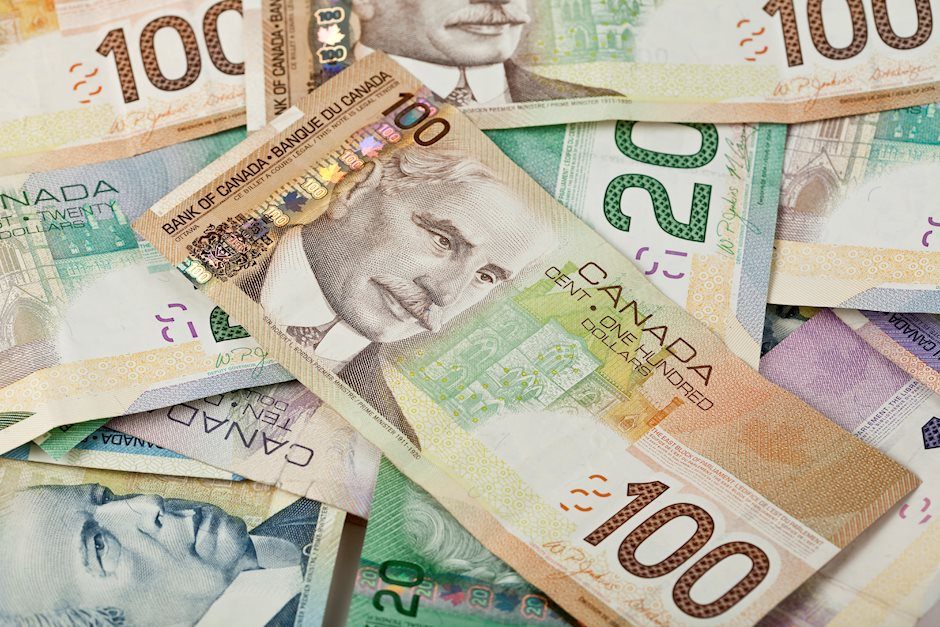USD/CAD returns above 1.3900 as US Dollar strengthens across the board
- USD/CAD bounces back above 1.3900 as Trump’s victory strengthens the US Dollar.
- Investors expect the Fed to cut interest rates by 25 bps to 4.50%-4.75%.
- The BoC delivered a bigger rate cut due to slowing inflation and weak labor demand.

The USD/CAD pair recovers Tuesday’s sell-off and returns above the key figure of 1.3900 in North American trading hours on Wednesday. The Loonie pair strengthens as the US Dollar (USD) looks set to register highest gains in single trading day in more than four years. The US Dollar Index (DXY), which discovers Greenback’s value against six major currencies, posts a fresh four-month high near 105.40.
The USD Index surges as citizens of the United State (US) have elected Republican Donald Trump as their 47th President. Trump beat his Democratic rival Kamala Harris in key battleground states takes by Senate. Risk-perceived currencies have been hit hard by Trump’s victory as investors expect higher import tariffs and lower corporate taxes in his administration. The scenario looks favorable for the US Dollar as it will boost corporate investment and labor demand.
Going forward, investors will focus to the Federal Reserve’s (Fed) monetary policy decision, which is scheduled for Thursday. Traders have priced in an interest rate reduction by 25 basis points (bps) to 4.50%-4.75%, according to the CME FedWatch tool. This would be the second interest rate cut of this year. In September, the Fed started the policy-easing cycle, however, the rate-cut size was 50 bps. Investors will also pay attention to the impact of Trump victory on the inflation outlook and the interest rate path.
Though the Canadian Dollar (CAD) is weak against the US Dollar, it is performing strongly against other currencies even though the Bank of Canada (BoC) is expected to cut interest rates further. The BoC minutes for the October meeting in which the central bank cut interest rates by a larger-than-usual size of 50 bps showed that policymakers are confident that the disinflationary trend is intact and labor demand is weak.
"Members felt that a larger step was appropriate given the ongoing softness in the labor market and the need for stronger economic growth to absorb excess supply," it said.
Canadian Dollar FAQs
The key factors driving the Canadian Dollar (CAD) are the level of interest rates set by the Bank of Canada (BoC), the price of Oil, Canada’s largest export, the health of its economy, inflation and the Trade Balance, which is the difference between the value of Canada’s exports versus its imports. Other factors include market sentiment – whether investors are taking on more risky assets (risk-on) or seeking safe-havens (risk-off) – with risk-on being CAD-positive. As its largest trading partner, the health of the US economy is also a key factor influencing the Canadian Dollar.
The Bank of Canada (BoC) has a significant influence on the Canadian Dollar by setting the level of interest rates that banks can lend to one another. This influences the level of interest rates for everyone. The main goal of the BoC is to maintain inflation at 1-3% by adjusting interest rates up or down. Relatively higher interest rates tend to be positive for the CAD. The Bank of Canada can also use quantitative easing and tightening to influence credit conditions, with the former CAD-negative and the latter CAD-positive.
The price of Oil is a key factor impacting the value of the Canadian Dollar. Petroleum is Canada’s biggest export, so Oil price tends to have an immediate impact on the CAD value. Generally, if Oil price rises CAD also goes up, as aggregate demand for the currency increases. The opposite is the case if the price of Oil falls. Higher Oil prices also tend to result in a greater likelihood of a positive Trade Balance, which is also supportive of the CAD.
While inflation had always traditionally been thought of as a negative factor for a currency since it lowers the value of money, the opposite has actually been the case in modern times with the relaxation of cross-border capital controls. Higher inflation tends to lead central banks to put up interest rates which attracts more capital inflows from global investors seeking a lucrative place to keep their money. This increases demand for the local currency, which in Canada’s case is the Canadian Dollar.
Macroeconomic data releases gauge the health of the economy and can have an impact on the Canadian Dollar. Indicators such as GDP, Manufacturing and Services PMIs, employment, and consumer sentiment surveys can all influence the direction of the CAD. A strong economy is good for the Canadian Dollar. Not only does it attract more foreign investment but it may encourage the Bank of Canada to put up interest rates, leading to a stronger currency. If economic data is weak, however, the CAD is likely to fall.
Author

Sagar Dua
FXStreet
Sagar Dua is associated with the financial markets from his college days. Along with pursuing post-graduation in Commerce in 2014, he started his markets training with chart analysis.

















